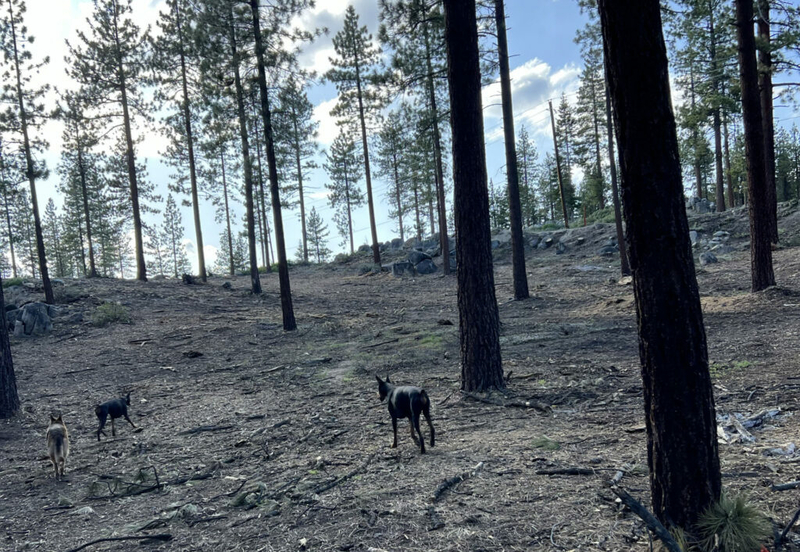NV Energy’s natural disaster plan a calamity for Southern Nevada ratepayers, say experts

A natural disaster preparedness plan focused in Northern Nevada could cost NV Energy customers hundreds of millions of dollars over the next three years, according to testimony filed with the Public Utilities Commission, with customers in the southern part of the state subsidizing improvements on the utility’s property in the north.
NV Energy’s Natural Disaster Protection Plan, submitted every three years, is a legislative mandate passed in 2019 to mitigate the impacts of fires in areas with the highest threat. The legislation, sponsored by former Sen. Chris Brooks, was signed into law by then-Gov. Steve Sisolak. Brooks is married to Michelle White, who served as Sisolak’s chief of staff.
NV Energy projects it will spend $373 million on disaster preparedness in the next three years – $171 million for capital expenses ($43.5 million in Southern Nevada and $127.6 million in Northern Nevada) and $202 million for operations, maintenance, administrative & general (OMAG) costs – projected at $33.5 million for Southern Nevada and $168.5 million for Northern Nevada.
NV Energy is permitted to earn a profit on capital expenses as well as OMAG costs. The utility stands to earn $9.5 million over three years just on OMAG costs, according to testimony provided to the PUC.
Witnesses who testified before the PUC say NV Energy’s proposed budget for the work is inflated.
Mark Garrett, a CPA and attorney from Oklahoma who has been providing testimony on behalf of the gaming industry since the late 1990s, testified NV Energy has yet to spend about half of its 2020-2022 budget of $272 million and its request for large increases is premature.
He said traditional ratemaking creates an “incentive for utilities to overspend on capital investment. Here, the NDPP rules extend that incentive to include OMAG costs,” which he says are usually recouped dollar for dollar, but do not turn a profit.
Garrett testified the PUC should require NV Energy to include OMAG costs in a general rate case, rather than as a surcharge.
The utility wants ratepayers in Southern Nevada to foot the bill for about half of the three-year plan’s $202 million in OMAG costs, according to testimony from David Chairez of the state’s Bureau of Consumer Protection. The money would be earmarked primarily for tree trimming and brush removal, largely in the Lake Tahoe basin.
Chairez testified Southern Nevada customers have already subsidized $47.6 million in work performed on NV Energy property in the north during the first three years of the disaster preparedness plan – $5.4 million in 2019, $12 million in 2020, and $30.2 million in 2021. Additionally, NV Energy is requesting that Nevada Power customers in the south subsidize $19.6 million in OMAG costs incurred in Northern Nevada in 2022.
Customers currently pay about $2 to $2.50 a month toward the NDPP, depending on electricity usage. The plan for the next three years would more than double that charge.
Two companies, one rate?
NV Energy is a holding company. Its subsidiary, Nevada Power Company, operates in Southern Nevada, while Sierra Pacific Power Company provides electricity and natural gas to customers in Northern Nevada.
Cary Shelton-Patchell, director of Revenue Requirement and Regulatory Accounting for Nevada Power, testified the PUC should impose a statewide rate to recoup the $202 million in projected costs for OMAG. Customers in Southern Nevada would subsidize $102 million, more than half the maintenance budget, while only 15% of the money is slated to be spent in Southern Nevada.
Critics contend the proposed statewide rate and resulting subsidy should be disallowed, but the utility argues Nevada’s legal definition of a utility allows for a holding company.
In 2020, during NV Energy’s first application for a natural disaster preparation plan, the state’s consumer advocate argued NV Energy’s bid for a single-rate cost recovery mechanism misallocated costs between Nevada Power customers in the south and Sierra Pacific customers in the north. The PUC, however, sided with the utility, writing that “every ratepayer benefits from the NDPP and the mitigation of natural disasters, and every ratepayer should equally bear the costs to mitigate these risks.”
“NV Energy has supported the PUCN’s approach to this and submitted testimony in the plan docket supporting the statewide benefits of this program through expert witness Jeremy Aguero of Applied Analytics,” NV Energy spokeswoman Meghin Delaney said via email in response to questions submitted by the Current. Aguero is a principal with Applied Analysis.
About 85% of the maintenance budget would be spent clearing trees and removing brush from Lake Tahoe, according to Brad Mullins, an energy consultant and expert witness who provided testimony to the PUC on behalf of the Nevada Resort Association and other parties.
Some residents are critical of an effort currently underway – the NV Energy Resiliency Corridor project – which they allege has violated its own guidelines by felling trees that pose no threat to power infrastructure.
The $14 million dollar project is paid for in part by the Southern Nevada Public Land Management Act (SNPLMA), which uses proceeds from public land sales in Southern Nevada for a variety of projects, including hazardous fuel reduction and Lake Tahoe restoration in Northern Nevada.
“Overall, this is the same project with the same goal,” NV Energy spokeswoman Delaney said in response to questions submitted by the Current, adding the utility is working with different partners to tap funding sources.
Bad math
Mullins, testifying on behalf of the Nevada Resort Association, Caesars Entertainment, MGM Resorts International, Wynn Resorts and the Smart Energy Alliance, says NV Energy’s budget projections are inflated. In 2020, the PUC approved a budget of $238 million for a three-year plan, less than the utility’s original bid for $346 million.
“Excluding grants, NV Energy proposes a total vegetation management budget of $150 million or 74% of NV Energy’s total OMAG budget,” he testified. That includes $35.6 million in tree trimming and $113.5 million in grubbing (removing brush and weeds around utility poles.)
NV Energy attributes the increase in its vegetation management budget to the need to treat high risk areas, as well as perform ongoing maintenance in areas already treated.
But Mullins says the utility projection “is flawed” because it proposes follow-up maintenance on areas that have not been previously treated, resulting in an artificially large OMAG budget.
He recommends a $74.4 million reduction in NV Energy’s three-year NDPP budget.
“Pole grubbing activities started in 2020 and those treatments will begin maintenance this year, and 2024 is the ramp up start to include both initial and maintenance treatments in other areas,” says Delaney of NV Energy.
Mullins also suggests the disaster preparedness plan’s OMAG costs be recovered through general rates, rather than surcharges, which would eliminate the cross-subsidy.
The PUC is expected to take up the NDPP application on June 21.








